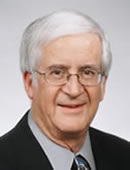All psychiatric reports evaluate something, but not always the same thing. For example, eligibility for benefits, or fitness to do a job. To make sense of the report, the reader must determine what is being evaluated and how it is being done. Psychiatric reports are not created equal. To be meaningful, the diagnoses and conclusions in a psychiatric report must be supported by data contained in the report.
- The place to start reading a report is its date. How current is the report?
- How much time, if any, was spent in face-to-face interviewing. Most evaluators agree such an examination is the gold standard. It is, however, possible and ethical to evaluate a person's mental state solely on the basis of collateral information. Know what you are dealing with.
- Was the examinee cooperative (or in the case of medical records, were they complete and reliable)? Information about this is found in the amount of historical distortion for certain events between the examinee and other observers. Also, the mental status exam (more about that later) should comment about the examiner's sense if the informant was guarded or evasive. Also, certain psychological tests have reliability scales embedded in them. The MMPI-2[1] has several, the MCMI-III[2] has one, and comparing certain neuro-psychologic tests can address inconsistent response patterns. When inconsistencies exist, it is the duty of the report writer to identify them and explain their significance to the final diagnosis, opinions, and conclusions. Failing to do so affects the reliability of the examiner's conclusions.
Generally,
the more direct information, and collateral information reviewed by the evaluator, the better the diagnosis. Consequently, an evaluator who doesn't have as much background information is working at a disadvantage
Diagnosis is most often presented at the end of the report. Psychiatric diagnoses usually are expressed along a 5-Axis paradigm:
- Axis I - [This is where acute pathology or development disorders are identified]
- Axis II - [Personality disorders are described here; these are maladaptive personality styles which significantly interfere with social, school or occupational functioning. Usually the person is not bothered by his or her style, though others may be.]
- Axis III - [Medical conditions which affect the Axis I or Axis II diagnoses are given here. Thus, hay fever probably wouldn't be on Axis III diagnosis for a person with paranoia, even if the paranoid person had hay fever. However, if a person whose depression is aggravated by back pain, then the back condition would be identified in Axis III.]
- Axis IV - [Psychosocial stressors. This is a qualitative statement ranging from absent to extreme. The stressors should be listed in descending order of importance.]
- Axis V - [Global Assessment of Functioning (GAF). This is a non-linear 100 point scale which must be referred to by professionals for coding in the Diagnostic and Statistical Manual for Mental Disorders, the most recent edition IV-TR (text revision), DSM-IV-TR, although edition V is in the offing. A score of 71/100 is described:
"If symptoms are present, they are transient and expectable reactions to psychosocial stressors (e.g. difficulty concentrating after a family argument; no more than slight impairment in social, occupational, or school functioning (e.g., temporarily falling behind in school work)."
By this definition, a person with a 50/100 on the GAF is totally disabled. Furthermore, any number below 50/100 is, by definition, totally disabled. A psychiatric disturbance of 50/100 is not the same as a disability of 50%.]
[1] Minnesota Multiphasic Personality Test-2 The most widely used and thoroughly researched objective personality inventory, the MMPI-2 consists of 567 True-False questions. Scores are reported as "T" scores: mean score is 50, standard deviation is 10; a T-score of 70 is higher than that of 98% of the normative population. It provides indicators to assess the validity of the profile and gives measures of ten aspects of the subject's emotional status as well as the quality and style of his thought processes.
[2] MillonTM Clinical Multiaxial Inventory-III
DISCLAIMER: The information provided on this website and in this article do not constitute legal advice. Readers should consult with their own legal counsel for the most current information and to obtain professional legal advice before acting on any of the information presented.
Stephen M. Raffle, M.D., a Board Certified Forensic Psychiatrist, has over 36 years of experience offering his expert opinion in Federal and State jurisdictions. Dr. Raffle has consulted for attorneys, insurers, employers and judges. His track record and experience is impressive: over 5000 psychiatric evaluations, 700+ depositions, 150+ trials, a successful clinical practice, teaching career at U.C. Medical School, and Hastings College of the Law postgraduate course "Trial and Appellate Advocacy" for 11 years instructing attorneys about the direct and cross-examination of expert witnesses.
©Copyright - All Rights Reserved
DO NOT REPRODUCE WITHOUT WRITTEN PERMISSION BY AUTHOR.











